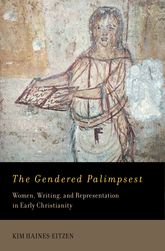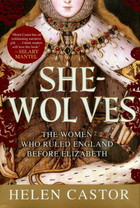The gendered palimpsest: women, writing, and representation in early Christianity
Books and bodies, women and books, and the malleable word and flesh lie thematically at the center of The Gendered Palimpsest, which explores the roles that women played in the production, reproduction, and dissemination of early Christian books, and how the representation of female characters was contested through the medium of writing and copying. The book is organized in two sections, the first of which treats historical questions: To what extent were women authors, scribes, book-lenders, and patrons of early Christian literature? How should we understand the representation of women readers in ascetic literature? The second section of the book turns to text-critical questions: How and why were stories of women modified in the process of copying? And how did debates about asceticism–and, more specifically, the human body–find their way into the textual transmission of canonical and apocryphal literature?
Throughout the book, Haines-Eitzen uses the notion of a palimpsest in its broadest sense to highlight the problems of representation, layering, erasure, and reinscription. In doing so, she provides a new dimension to the gendered history of early Christianity.




